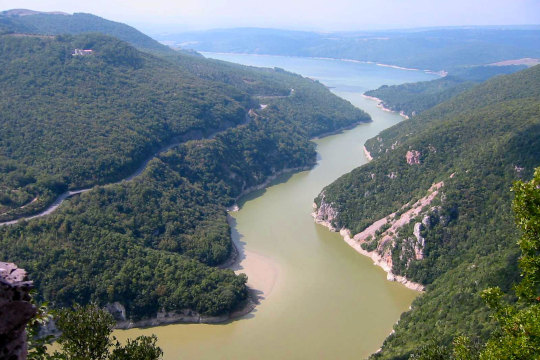#Tiber River
Text
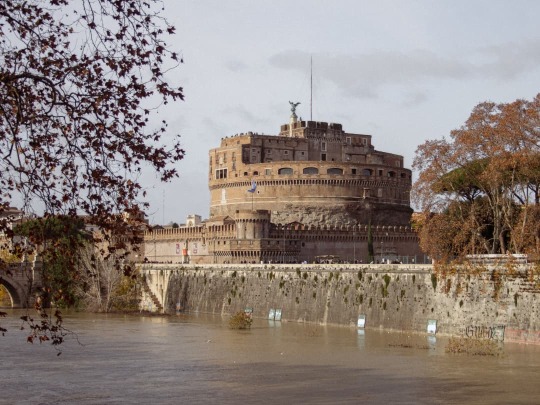


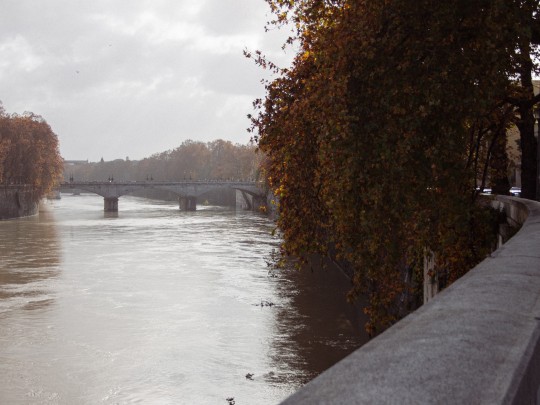
Autumn in Rome, Italy. (2022)
© acquaesale on Tumblr
#roma#rome#italia#italy#lazio#tevere#tiber#tiber river#river#water#autumn#fall#st peter's basilica#st peter's dome#castel sant'angelo#chiesa del sacro cuore del suffragio#lungotevere#canon#photography#photographers on tumblr#mine*#bridge#trees#architecture#basilica di san pietro#cupola di san pietro
170 notes
·
View notes
Text
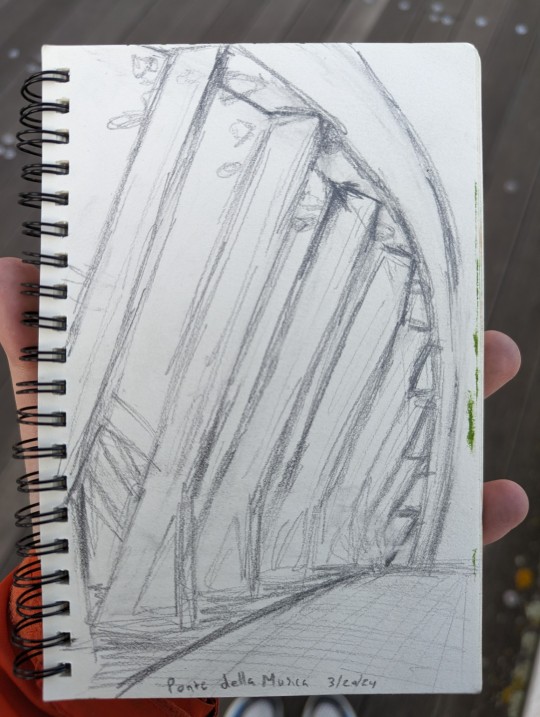

Ponte della Musica 3/20/2024
#me vs not squishing perspective#art#my art#drawing#sketch#pencil Sketch#pencil drawing#Rome#roma#ponte della musica#bridge#architecture#modern architecture#flaminio#tiber river#music bridge#Armando Trovajoli
4 notes
·
View notes
Text
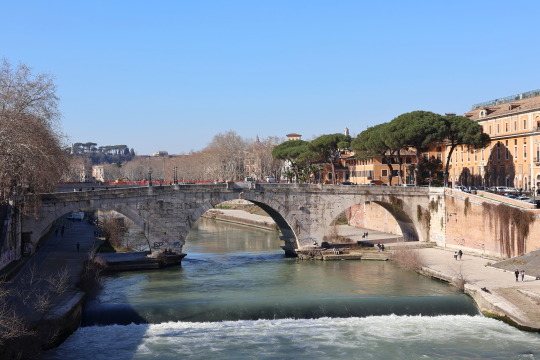
Ponte Cestio, Rome
February 2024
Check out my blog post about this recent visit!
#bridge#rome#roma#italy#italia#historical architecture#original photography#photography#travel#photographers on tumblr#lensblr#architecture#tiber#tiber river#ponte#wanderingjana
4 notes
·
View notes
Text


By Jane von Mehren
11 January 2023
The highly civilized Etruscans had a huge impact on the city’s eventual geography, architecture, government, trade, and agriculture.
They created excellent schools to which rich Romans sent their sons, much as they would later send them to Greek institutes.
By the sixth century B.C., some of Rome’s most famous institutions, from the Forum to the Senate, were in existence but even the most reputable historians — including Fabius, Livy, and Plutarch — started their accounts of the empire in legend.
Legendary beginnings

The story of Rome’s founding begins in Alba Longa, the first “city” of Latium, a region in central western Italy, occupied by Latins.
The area had been inhabited since the Bronze Age by farming communities and was known to the ancient Greeks, which is perhaps why Aeneas, a Trojan prince, is said to have established it around 1150 B.C.
According to legend, in Alba Longa, two of Aeneas’s descendants, the brothers Amulius and Numitor, fought over who would rule.
Amulius triumphed, killing Numitor’s sons and exiling his daughter, Rhea Silvia, to become a Vestal Virgin.
Through divine intervention, she gave birth to the twins Romulus and Remus.
Threatened by these potential claimants to his throne, Amulius beheaded Rhea Silvia and abandoned the babies in the river Tiber.
Miraculously, a she-wolf rescued and cared for the boys until a shepherd, Faustulus, adopted them, raising them on the Palatine Hill, located in modern-day Rome.
The legend goes on to say that the brothers established the city of Rome on the banks of the Tiber River, where it was narrow enough for crossing and the hills provided a good defensive position.
The land between the hills, however, was quite marshy and not all that fertile.
The twins soon quarreled about the city’s exact boundaries and Romulus killed Remus.
Romulus, along with the outlaws and criminals he recruited, invited neighboring tribe the Sabines, who had resisted intermarrying with the Romans, to a fête.
During the merriment, Romulus raised his cloak signaling his men to seize and abduct the young Sabine women.
As the origin story goes, being Roman wives suited the women and they stopped the Sabine men from battling the Romans when they came to recapture them.
In the end the Sabines remained in Rome as part of the new city.
Influences in the area

Archaeological evidence tells us that Rome’s actual origins were less dramatic.
The first Romans were Latin farmers and shepherds living in small village huts on the Esquiline and Palatine hills.
The Sabines, a tribe living to the north, divided soon after the city’s founding, and some of them came south and united with Rome’s people.
Rome remained relatively primitive until the 600s B.C., when the Etruscans, who controlled a series of city-states to the north, began taking control of the city.
Kingdom of Rome
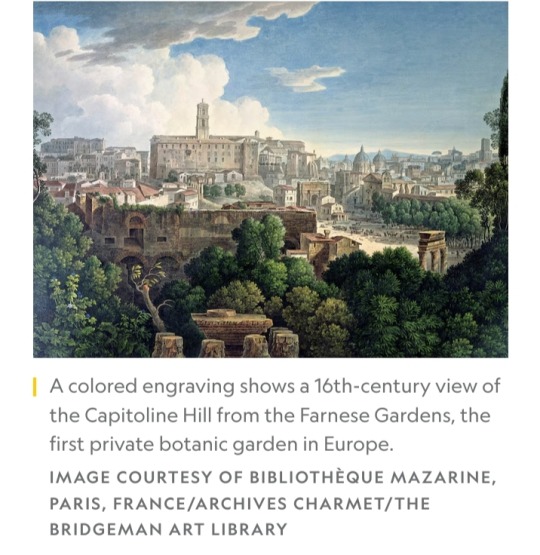
While modern scholars discount some of the accounts of ancient Roman historians, they agree that during the first phase of its history — from approximately 753 to 509 B.C. — Rome was ruled by kings.
According to these writers, Romulus was the first, succeeded by Numa Pompilius, a Sabine, and in 616 B.C., by an Etruscan named L. Tarquinius Priscus.
Kings had almost absolute power, serving as administrative, judicial, military, and religious leaders. A senate acted as an advisory council.
The king chose its members, who became known as patricians, from the city’s leading families.
Unlike later monarchs, Roman kingship was not inherited.
After a king died, there was a period known as an interregnum, when the Senate chose a new ruler, who was then elected by the people of Rome.
The king-elect needed to obtain approval of the gods and the imperium, the power to command, before assuming his throne.
Etruscan influences
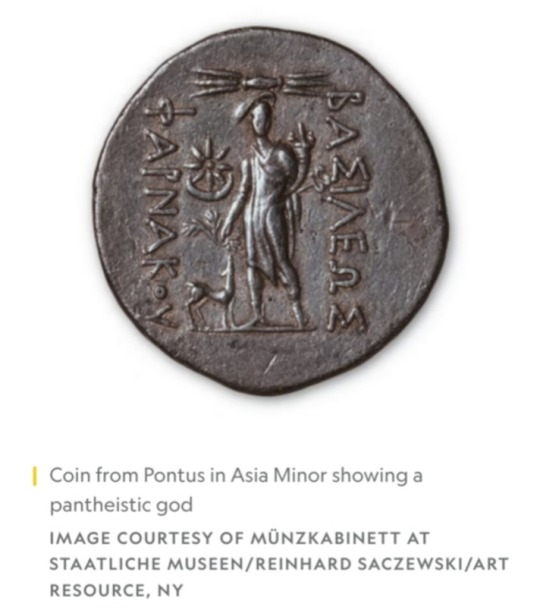
The Etruscans ruled a loose confederation of city- states that stretched from Bologna to the Bay of Naples.
It remains unclear where they originated, but they used a version of the Greek alphabet and some ancient sources describe them as coming from Asia Minor.
Around 650 B.C., they were already dominant in the region and took control of Rome, wanting its strategic position on the Tiber.
Under Etruscan kings, Rome grew from a series of villages into a proper city.
The Etruscans drained the marshes around the city, constructed underground sewers, laid out roads and bridges.
They established the cattle market, Forum Boarium, as well as Forum Romanum, the central market and meeting place that evolved into the heart of the empire.
Toward the end of this period of Etruscan influence, the first temple of Jupiter was built on the Capitoline Hill.
This temple, although rebuilt many times, became the symbol of Rome’s power.
Founding the Republic

The era of Roman kings ended in 509 B.C., when the Romans supposedly expelled the last Etruscan king, L. Tarquinius Superbus, in another mythicized event.
As recounted by historians, including Livy, the son of Tarquinius Superbus, Sextus, raped at knifepoint the noblewoman Lucretia, wife of the king’s great nephew.
Lucretia, feeling that her honor and virtue had been lost, committed suicide.
Her uncle Brutus swears to avenge her and commits to revolution and the expulsion of the monarchy.
To the Roman people, her story represents the tyrannical powers of the monarch on the state, and so the saga of Lucretia is cited as the event that spurred the Roman Republic into being.
In place of the monarchy, Romans established a republic, which lasted until 30 B.C.
Over the course of nearly five centuries, Rome became a dominant Western power, seizing territory throughout the Mediterranean, creating an enormous and efficient army, and learning how to administer its vast provinces.

NOTE:
The traditional date for the founding of Rome is 21 April 753 BC.
#Rome#Ancient Rome#Romulus#Remus#Alba Longa#Latium#Italy#Aeneas#Amulius#Numitor#Rhea Silvia#Vestal Virgin#Faustulus#Palatine Hill#Tiber River#Sabines#Etruscans#Numa Pompilius#L. Tarquinius Priscus#interregnum#imperium#Forum Boarium#Forum Romanum#Capitoline Hill#Temple of Jupiter#L. Tarquinius Superbus
3 notes
·
View notes
Text
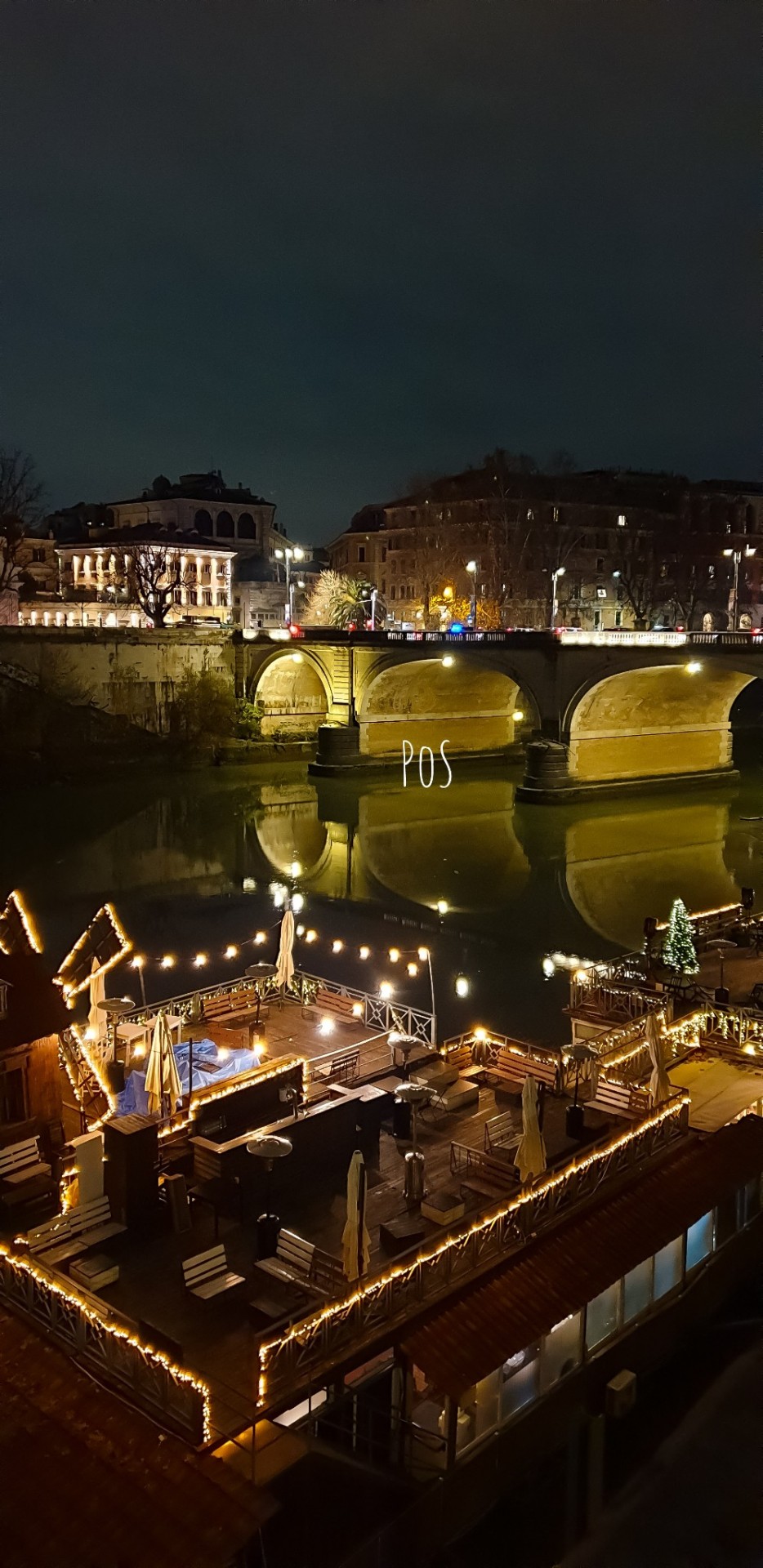
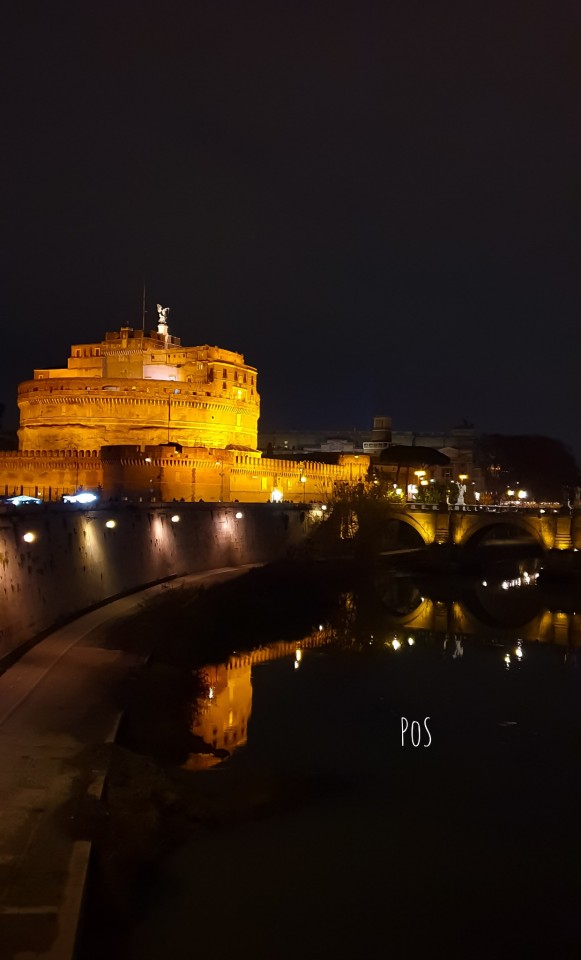
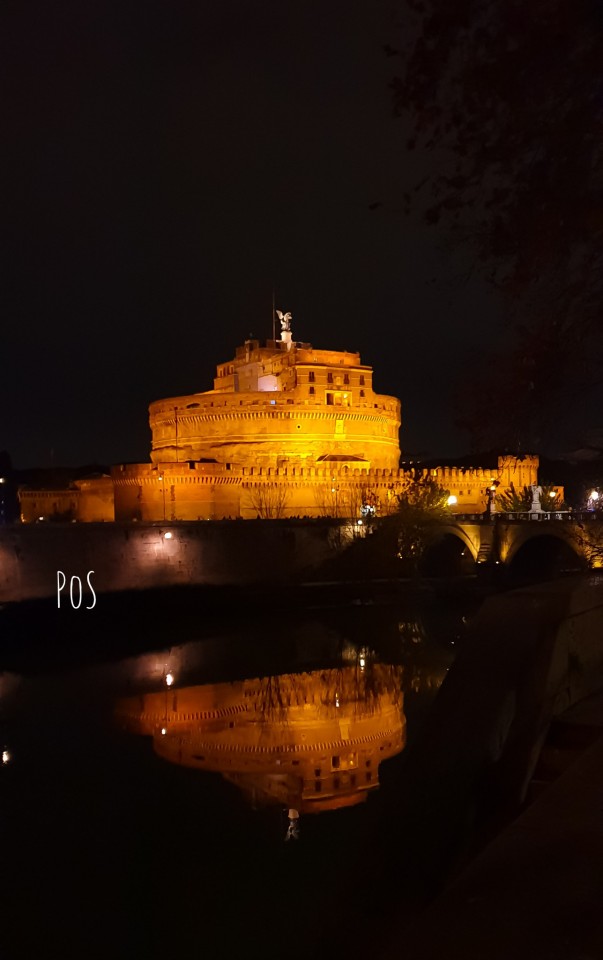
Roma by night
By Prince of Sayan
50 notes
·
View notes
Text

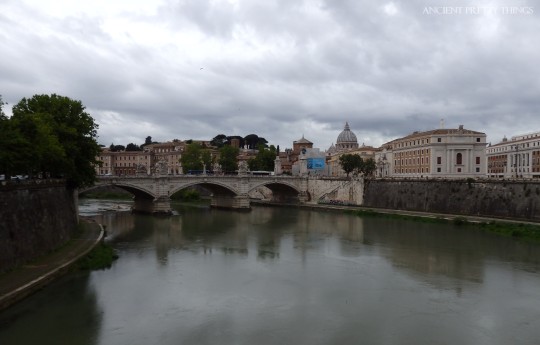
Castel Sant'Angelo, the site of Hadrian's burial; and a view of the Tiber from the Sant'Angelo bridge.
#rome#ancient rome#ancient roman#hadrian#castel sant'angelo#originalphotography#ancientprettythings#the tiber#tiber river#scenery
25 notes
·
View notes
Text
Romulus and Remus, Osiris and Moses: Are the Storytelling Similarities a Mere Coincidence? | Ancient Origins
https://www.ancient-origins.net/history-important-events/romulus-remus-story-0010653

View On WordPress
#Ancient Egypt#Ancient Israel#Ancient Rome#Horus#Isis#King Amulius#King Numitor#Miriam#Moses#Nile River#Osiris#Pharaoh#Princess Rhea#Remus#Romulus#Seth#She-wolf#Tiber River
2 notes
·
View notes
Photo






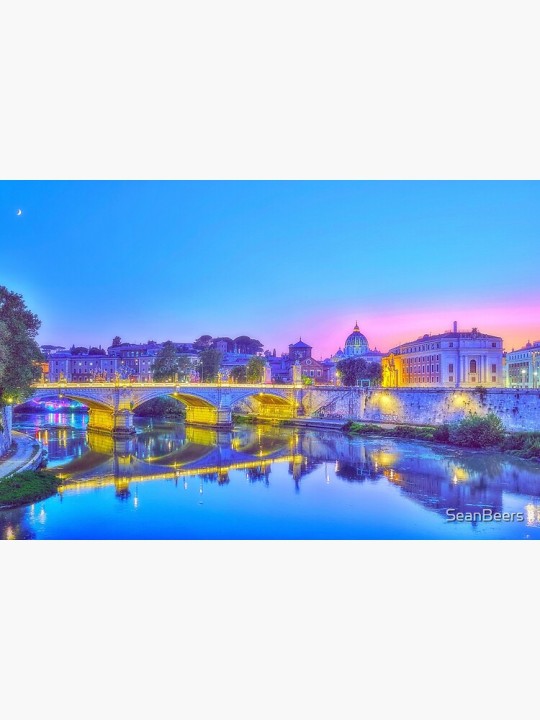

(via "Rome's Tiber River at sunset" Framed Art Print for Sale by SeanBeers)
Check out my shop and support my work. Thanks
1 note
·
View note
Text
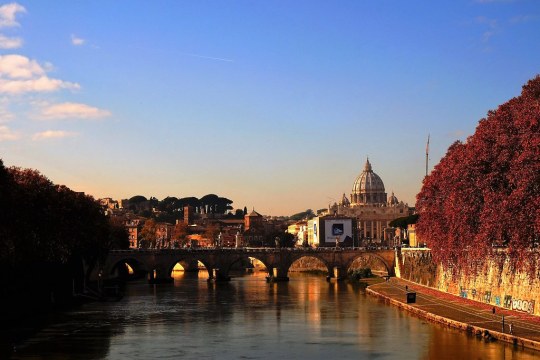
Rome in Autumn
1 note
·
View note
Text

The Girandola at the Castel Sant'Angelo by Louis-Jean Desprez and Francesco Piranesi
#girandola#castel sant'angelo#rome#italy#art#louis jean desprez#francesco piranesi#fireworks#fortress#mausoleum of hadrian#river tiber#carriage#carriages#spectators#crowd#crowds#rockets#explosion#night#sky
203 notes
·
View notes
Text

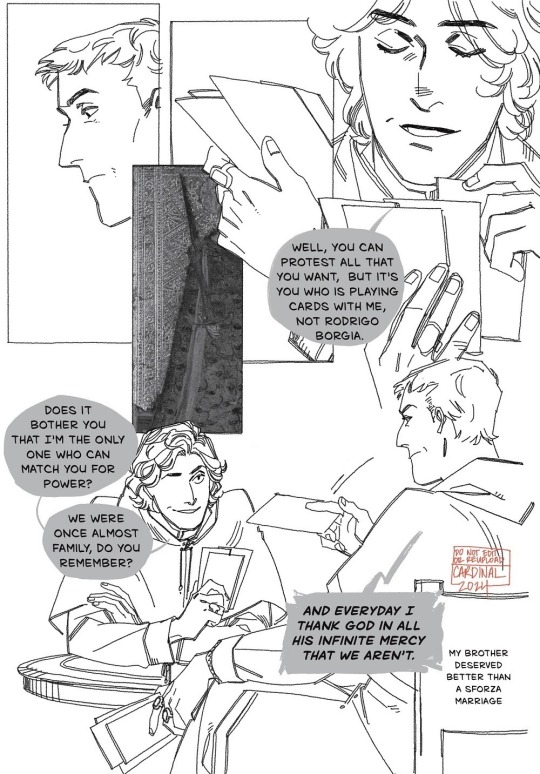
listen. listen, there's a kind of intimacy in having a dedicated rivalry, okay. who else is going to know you like this!!! also it's funny

Ascanio Maria Sforza: la parabola politica di un cardinale-principe del Rinascimento, Marco Pellegrini


Julius II: The Warrior Pope, Christine Shaw
and on della rovere’s soldier comment:
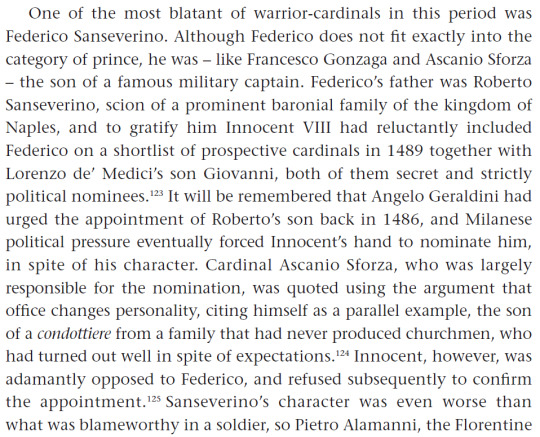
Popes, Cardinals and War: The Military Church in Renaissance and Early Modern Europe, D.S. Chambers
and finally! regarding the delightful Mess of political-family relationships, including the marriage comment (altho the montefeltro family that giovanni married into did have sforza family ties, since giovanna's mother was battista sforza, but this is about the more immediate alliance based relationship and della rovere's hand in the rejection of a milanese match for his brother. and. this is not even remotely a serious comic, but now I am once again thinking about insular all these families are. the fucking medicis are here too, if you go half a step to the left on della rovere's family tree)

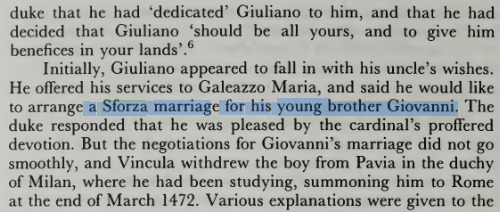
Julius II: The Warrior Pope, Christine Shaw
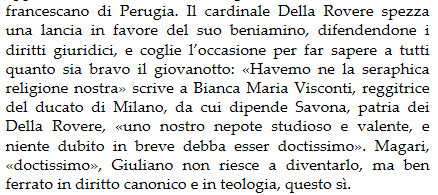
Giulio II, Il papa del Rinascimento, Giulio Busi (Bianca Maria Visconti is Ascanio's mom. btw)
panel inserts of the cards they're playing with are all from the Visconti-Sforza tarot deck! (I used public domain scans/photos for the comic itself)
ko-fi!⭐ bsky ⭐ pixiv ⭐ pillowfort ⭐ cohost ⭐ cara.app
#weeping. ascanio's dialogue covers up della rovere's sleeve collar. i spent all that time drawing details on it and FOR WHAT#(it was fun)#there was another deleted bit where ascanio has some petty line like 'i bet arguing makes you hard' but then i realized#that's something that lucullus would probably say to crassus and also i need to set that line up for ascanio#we gotta. we gotta character build (lays down face in the ground) we have to provide the character set up for it#it's really more of a line for cesare to drop at some point over how much rodrigo and ascanio argued#shout out to the time rodrigo threatened to throw ascanio into the tiber river or that time ascanio like. decided to physically get into#a fight with juan borgia#and they were still gambling partners after that????? damn okay. sometimes the vice chancellor can be (checks note) im not finishing#that statement#komiks tag#italian renaissance tag#ascanio sforza#giuliano della rovere#i WILL get a relationship dynamic tag for them once i can figure out something punchy and fun. anyway!#ehgh. I NEED. to go to milan. and go thru the archives. let me in. LET ME INNNNNNNNN
264 notes
·
View notes
Photo
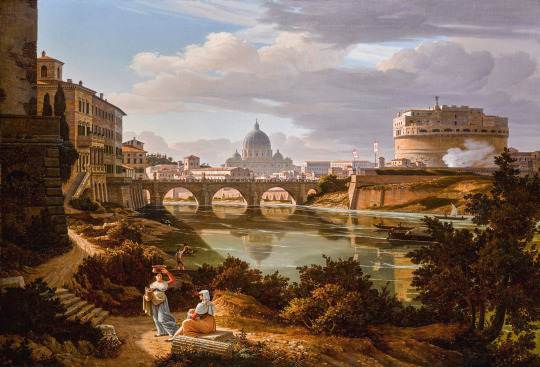
Rome, a view of the river Tiber looking south with the Castel Sant'Angelo and Saint Peter's Basilica beyond, c. 1834.
Rudolf Wiegman (German, 1804–1865)
Oil on Canvas, 68.3 x 99 cm
#Rome a view of the river Tiber looking south with the Castel Sant'Angelo and Saint Peter's Basilica beyond#Rome#Italy#Italia#Rudolf Wiegman#German artist#veduta#architecture#artedit
417 notes
·
View notes
Text

The quiet Tiber
View of the Tiber river in Rome Ostiense, March 2024. Leica R4 with 35 mm Summicron on Ilford Ilfocolor 400 Vintage Tone film.
#Tiber#river#Rome#landscape#Ostiense#photographers on tumblr#original photographers#film is alive#i still shoot film#analog photography#film photography#italy#bridge#gasometer#nature#Ilfocolor#vintage tone
82 notes
·
View notes
Text
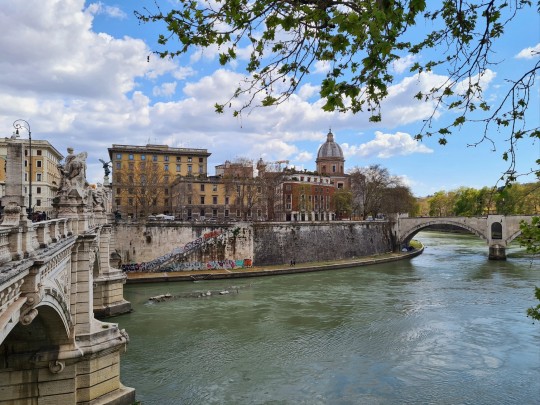
I've known rivers ancient as the world and older than the flow of human blood in human veins.
My soul has grown deep like the rivers.
-- Langston Hughes
(Roma)
#river#soul#depth#distance#ancient#travel photography#langston hughes#Roma#Rome#Italy#quote#tevere#river tiber
275 notes
·
View notes
